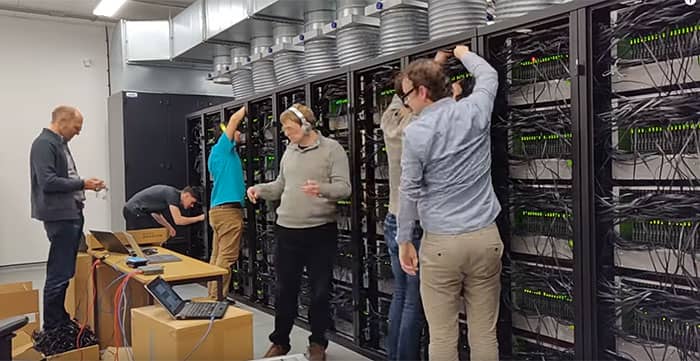The inner working and functions of the human brain are a mystery till date even though several contributions have been made to reproduce or create a copy of the organ. Examples of such innovations include neurotechnology initiatives which are aimed at using the human brain as a blueprint for computers. A team of researchers at the University of Manchester has put some of this know-how to practice to enhance the working of a supercomputer which has the processing power like the neurons in the brain. The term supercomputer gives an idea of an oversized computer. However, the SpiNNaker or Spiking Neural Network Architecture is modeled directly after the human brain and therefore, is called neuromorphic supercomputer.
After 20 years in conception, over 10 years in construction & £15 million in funding, today the SpiNNaker machine reaches its 1,000,000 cores milestone @FurberSteve @apt_csmcr @csmcr @HumanBrainProj . Read our full story #CodingTheFuture #supercomputers https://t.co/NWMkSVrQ4A pic.twitter.com/XUIN3t6glo
— UoM News (@UoMNews) November 2, 2018
The computer was switched for the first time on Friday. It is used to control a robot based on biological neurons. The supercomputer processes 100 million moving parts and carries out more than 200 million actions. The field of neuromorphic involves the use of machines to take a glimpse inside the human brain. It was created from a project called the Human Brain Project. To make work flourish in this field researchers suggest that “a paradigm shift for computing as a whole” and a “completely new category of hardware.”
SpiNNaker stands out for some important reasons, and the most significant one is because of its processing capacity. Researchers hope to fit the supercomputer with its one billionth processor one day which will add more to the power of 1% of the neurological function of the human brain. This is the organ which processes around 100 million neurons. Steve Furber, Professor of Computer Engineering, said about the project, “SpiNNaker completely re-thinks the way conventional computers work. We’ve essentially created a machine that works more like a brain than a traditional computer, which is extremely exciting. The ultimate objective for the project has always been a million cores in a single computer for real-time brain modeling applications, and we have now achieved it, which is fantastic.”
If the execution of the supercomputer is successful, there will be two benefits to it. One is that the neuroscientist community will stand to deepen the understanding of brain functions and second is that the robotics industry can use the brain power which is needed for controlling the robots. Professor Furber said that there are many advantages which a neuron-modeled machine can have for biology. He said, “Neuroscientists can now use SpiNNaker to help unlock some of the secrets of how the human brain works by running unprecedentedly large-scale simulations. It also works as a real-time neural simulator that allows roboticists to design large-scale neural networks into mobile robots so they can walk, talk and move with flexibility and low power.”
SpiNNaker will provide valuable assistance to the robot, SpOminbot. It is fitted with three omniwheels and two silicon retinas. The supercomputer will control it using CPLD and ARM microcontroller to help it assess the environment and then navigate around the potential obstacles.

